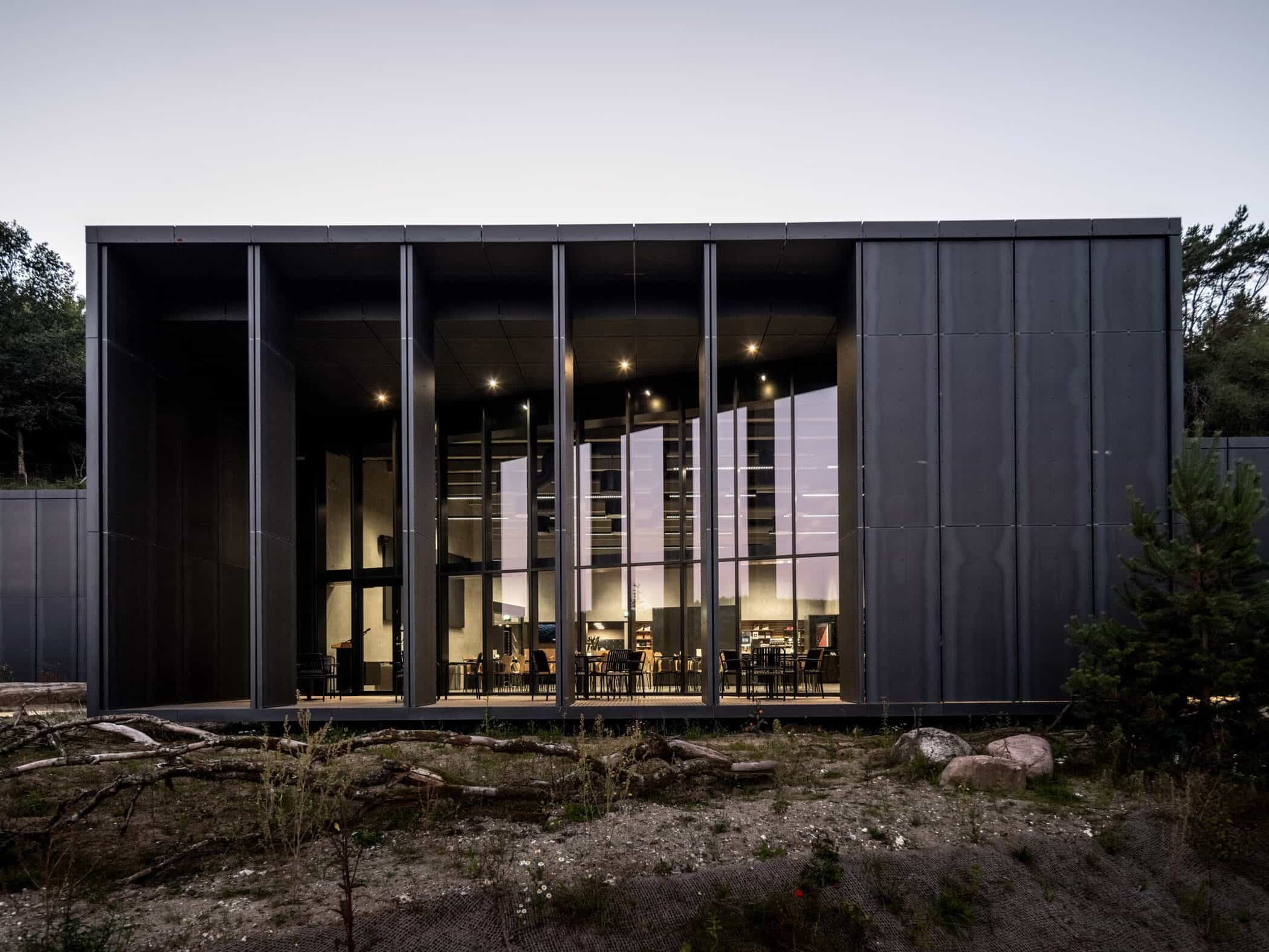AART’s design for the Cold War Museum Regan Vest in Denmark evokes a sense of history and intrigue with its striking black-metal facade.

PROJECT OVERVIEW
Location: Regan Vest, Northern Jutland, Denmark
Architecture: AART
Photography: Rasmus Hjortshøj
Nestled within the serene Rold Forest in northern Jutland, the Cold War Museum Regan Vest stands as a testament to a tumultuous era. Originally constructed as a secret bunker 60 meters underground, this Cold War relic was designed to safeguard the Danish government and royal family in the event of nuclear conflict. Its existence remained concealed until 2012, and it has since been transformed into a public museum, inviting visitors to explore Denmark’s Cold War history.

Opening its doors in 2023, the museum features a carefully designed structure by the Aarhus-based architecture studio AART. The design embraces a minimalist yet profound approach, presenting four distinct blocks clad in matte black steel panels. These panels are not just visually striking; they are intended to weather over time, eventually acquiring a rusty red hue reminiscent of the bunker’s worn surfaces. This evolution symbolizes the passage of time and the enduring legacy of the Cold War.
“The architectural solution presents four matte-black boxes, each a deliberate abstraction that guards the secrets within and behind,” explain AART partners Anders Tyrrestrup and Nicolaj Thunbo. This innovative approach sparks curiosity from the moment visitors arrive, enveloping them in an atmosphere rich with mystique and historical significance.

The partially embedded blocks create a harmonious relationship with the landscape, integrating seamlessly into the sloping site. Each volume serves a unique purpose, housing exhibition and event spaces, a central cafe, and administrative offices. A well-lit path lined with plantings leads visitors toward the entrance, further connecting the museum to its historical roots.
The central block, which is the largest, features full-height shutters, offering breathtaking views of the surrounding forest while allowing the cafe and reception areas to merge with the outdoors. This design not only invites nature into the space but also encourages a more interactive experience for visitors.

Inside, the use of black steel and exposed concrete captures the essence of the original 1960s bunker, while warm, pale wood accents in the cafe create a welcoming atmosphere. “The choice of materials reflects the character of the original bunker in a subtle and modern way,” remark Tyrrestrup and Thunbo. Their vision is to evoke the past while providing a contemporary space for education and reflection.
As the black-coated steel panels undergo transformation, they will develop a unique patina, resembling the remnants of war. “The boxes are covered in matte varnished Corten plates that will patinate over time to a partly rusty red—like war material left behind,” they elaborate, highlighting the thoughtful consideration behind the material choices.

The Cold War Museum Regan Vest is more than just a building; it is a narrative space that encapsulates the secrets and stories of a critical time in history. AART’s design not only pays homage to the past but also redefines the way we experience historical sites today.

This project joins a growing trend of repurposing Cold War-era structures, breathing new life into once-secret spaces. A notable example includes the transformation of a bunker near Prague into a mirrored pet crematorium by Petr Hájek Architekti. Meanwhile, in the U.S., Elkus Manfredi Architects have adapted a Cold War facility designed to endure nuclear blasts into a center for the Children’s National Research & Innovation Campus.
The Cold War Museum Regan Vest invites us to ponder the interplay between history and design, offering a glimpse into the past while providing a space for future generations to explore. As AART partners aptly conclude, “These enigmatic volumes integrate seamlessly into the visitor’s journey, ensuring a continuous narrative of suspense and historical depth.”




